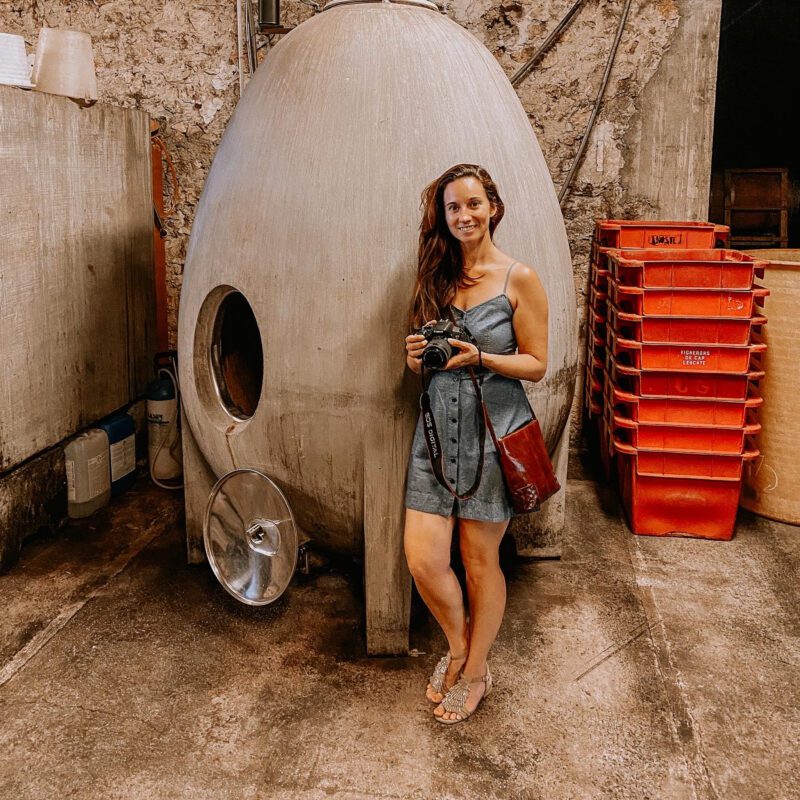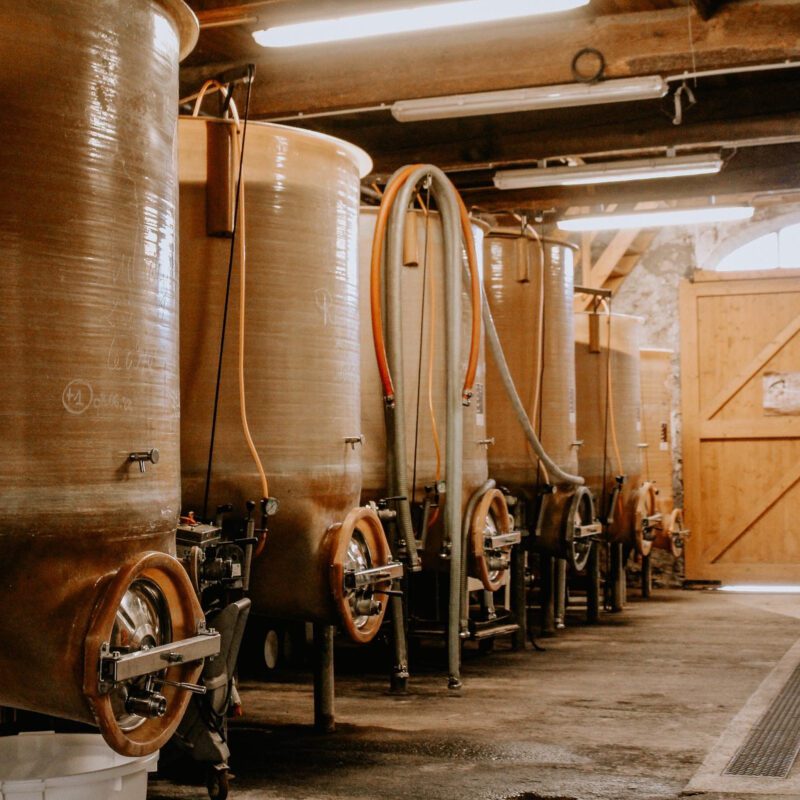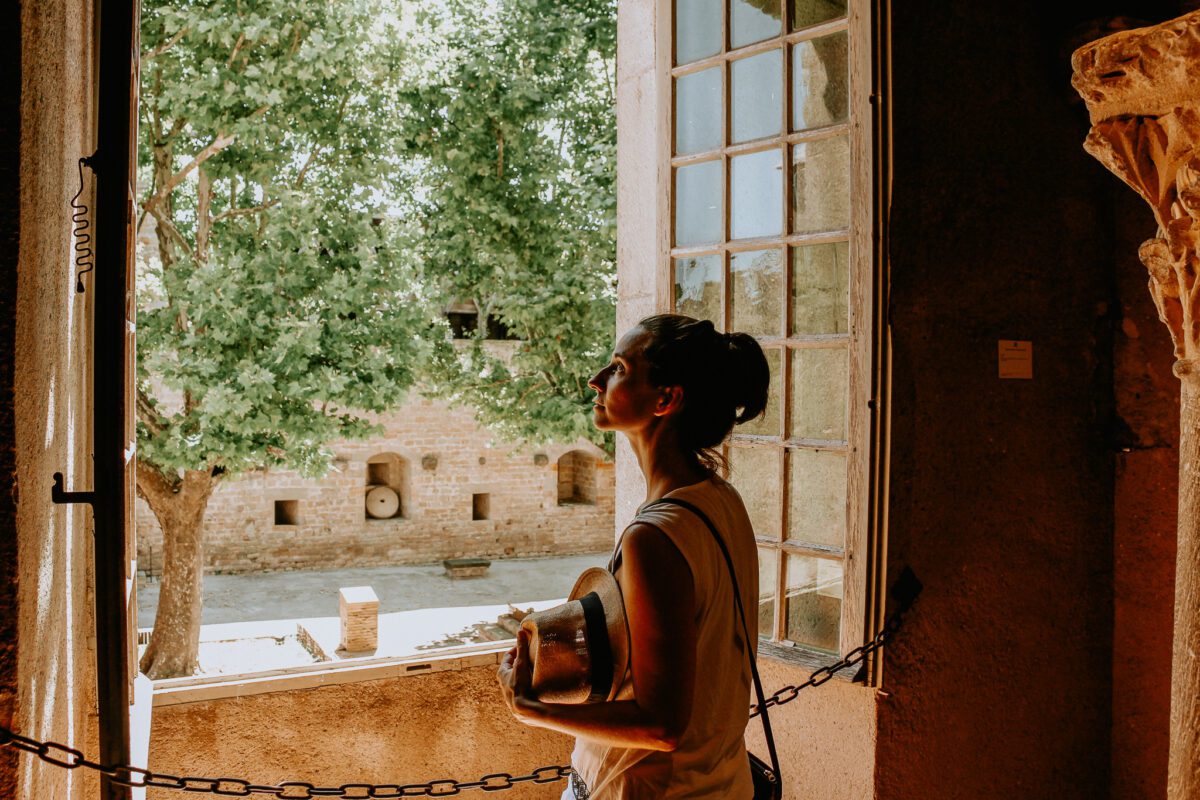
And… we’re back! Part 2 of the Travel Guide: Languedoc-Roussillon.
My goal is to not only share wine education with you all, but also what traveling does for that journey. I believe that culture, food and wine are all connected, which is why I enjoy immersive exploration so much.
After visiting northern Spain, we made our way back up north. Now I will take you through Languedoc and all it has to offer.
STOP #3: Leucate
A little bit of geography and history: located on the Mediterranean Sea, about 15 km (9 miles) to the north of Narbonne and about 50 km (31 miles) to the south of Perpignan. The town is found on a narrow peninsula, dividing the large lagoon of Étang de Leucate (Lake Leucate) from the Mediterranean Sea. First settled in the 7th century BC, Leucate was famous for its salt production. In the 12th century, the commune was given to the Saint-Hilaire Abbey by Raymond IV, the Count of Toulouse. The construction of canals and roads contributed to the period of growth and expansion in the 18th century and now the town is a popular tourist destination with its beaches and sailing/windsurfing opportunities.



Where to Stay
A lovely, albeit on the small side, apartment in a great location: HERE
What to Do
Four incredible hiking trails take you along the coast, each named after a unique theme: The Fisherman, The Shepherd, Vigneron and The Watchman.
For those of you who are watersports enthusiasts, Leucate is a dream! The fresh water lake connected to the Mediterranean Sea by a narrow channel creates an ideal location for kitesurfing, windsurfing and sailing.

My dreams of sailing the Mediterranean came true for me this summer, and I was certainly not disappointed! I grew up sailing on the Puget Sound and Lake Washington and raced competitively during my high school years. It was during this period that I learned how special it is being on the water and the experience it gives which can’t be realized anywhere else! I’m sure I don’t need to convince any of you how beautiful the Mediterranean is, with its crisp, turquoise waters and stunning rocky coastline.



We tried kite foiling for the first time, which was really cool. What is it? Basically, it is kiteboarding but with a hydrofoil attached to your board which lifts you out of the water and keeps you gliding along at high speeds. Flat water and strong winds are the ideal conditions for foiling, and Leucate provided just that. If you are interested in trying it out, but have no idea how, there is a great local school where we took lessons. Our instructor, Brian, was very patient (he needed to be!) and got us up on the foil and riding around within just a few hours. I would highly recommend it if you are into watersports or just looking for a new challenge, it is not an opportunity to be missed if you find yourself in Leucate.
Where to Eat
Le Grand Cap or Grand Cap Bistro
Chem. du Phare, 11370 Leucate
Enjoy fresh seafood and Languedoc-Roussillon wine while tucked away in a seaside corner under the shade of the lighthouse. Chef Erwan Houssin, along with his wife, Pamela, who made her pastry debut at Franck Putelat’s kitchens, creates a culinary experience that combines finesse with texture and flavor balance. They offer delectable, seasonally-inspired dishes and their desire to impress shows clearly in the dishes. Their Michelin starred restaurant sits just above their bistro.

La Closerie
101 bis, Avenue Jean Jaurès 11370 Leucate, France
Sample a fusion of French and Mediterranean cuisines here. Most guests recommend trying the perfectly cooked grillades, prawns and foie gras. You may have to go back a couple of times (or not, if your sweet tooth is like mine!) so as not to miss the parfait, tiramisu and panna cotta. Delicious wine and coffee supplement any meal perfectly. Sit inside or out and take in the quiet ambience and modern décor. A big bonus is the service – very nice staff and no long waiting times.


Where to Drink
Mes Des Caprices (Mireille and Pierre Mann)
Rue du Boulodroma 11370 Leucate
A biodynamic winery in the heart of the Leucate Village. A husband and wife team, originally from Alsace, produce excellent wines that reflect their regional roots.
Leucate Wines
The town of Leucate in France is authorized to produce the following appellation wines: Rivesaltes, Languedoc, Grand Roussillon, Muscat de Rivesaltes, Aude, Pays d’Oc, Pays Cathare, Fitou and Corbières. I want this section to reflect how much one wine can differ from another, even within the same appellation. A Fitou wine, made using vines from Leucate vineyards, will taste completely different from wine using vines from Carcassonne. The distinction was made very clear as we sampled the variety on offer at Mes Des Caprices.


One exceptional white, Blanc de l’Oeuf, is made from a blend of 2/3 white and gray Grenache and 1/3 Maccabeu. The vines are grown in the limestone terroir of Leucate, a stone’s throw from the Mediterranean Sea. The wine is vinified in concrete egg-shaped (hence the name) tanks, emboldening it with a round freshness. This floral wine embodies both a delicate and firm flavor with a touch of acidity.



Carcassonne
Carcassonne is a fortified city in the south of France, famed for its unique medieval architecture. The city’s historically strategic location on the banks of the Aude River has made it a major commercial and military hub throughout history. It is located in the Occitanie region of southern France, about 100 km (62 miles) southeast of Toulouse. The center of Carcassonne is recognized as a UNESCO World Heritage Site.

Where to Eat
Brasserie á 4 Temps was incredible. Here, you can discover a creative concept from Franck Putelat with an ever-changing menu that includes locally and seasonally sourced products from throughout the region. Our day in Carcassonne was one of the hottest on record in France. The watermelon-infused gazpacho was nothing short of a dream! Followed by roasted guinea fowl on a bed of quinoa and mouth watering chocolate thé gourmand, this restaurant will not disappoint anyone looking for a creative and delicious meal. The wine list is also excellent, offering a wide variety of local options.



What to See
You can take a tour around the inside of the carefully preserved walled city or stroll (carefully!) along the ramparts to enjoy a bird’s eye view of Carcassonne. The medieval castle, Château Comtal, is one of the most impressive fortifications in Europe and is definitely not to be missed. For a taste of culture, there are several museums, art galleries and historical monuments to be explored in the city.
What to Do
Canyoning in the Pyrenees: This was my first experience with canyoning. The climb to the starting point was difficult, but it was worth it once we began. Canyoning, for those of you who aren’t familiar, involves rappelling down waterfalls, sliding down natural rock slides and jumping into pools of water. It is a great way to explore the hidden depths of the Pyrenees while receiving quite an adrenaline rush! I was surprised how much I enjoyed this sport and the physical challenge it poses. Canyoning provides you with a completely different way to explore the region’s spectacular beauty and I would highly recommend it to anyone considering it.



The Wines
The wines of Carcassonne are world-renowned. The region is known for its intense, full-bodied reds that are perfect for aging. Some of the most popular AOC in the area include Corbières, Fitou and Minervois.
Before I finish, I want to leave you with two common misconceptions about Languedoc-Roussillon, the truth behind which will hopefully give you something to consider when choosing a wine or traveling through the region.
1. Probably the biggest misconception is that regional wines are heavy, tannic and hot, something I mentioned as being false in Part One. In AOC, like Leucate, the wines are heavily influenced by the Mediterranean climate and as a result produce whites with hints of the sea and a refreshing, saline-like acidity. The wines from Languedoc-Rousillon may not vary much, but those from the mountain climates of the Pyrenees and rocky shores and sandy beaches of the Mediterranean are extremely diverse.



2. Another mistruth: the quality of the wines produced in this region is inferior to that of other French wines. What nonsense! FACT: Languedoc-Roussillon has more natural and biodynamic producers than any other region in France. The winemakers here have a history of trying new methods, working organically and with the freedom that many other regions are lacking. All of this can be tasted in the spectacular wines they have on offer.